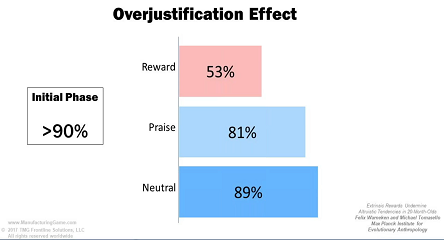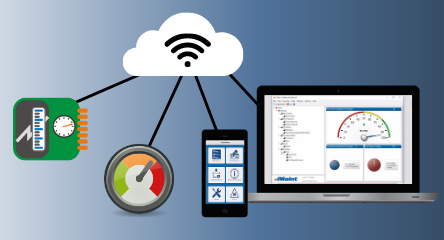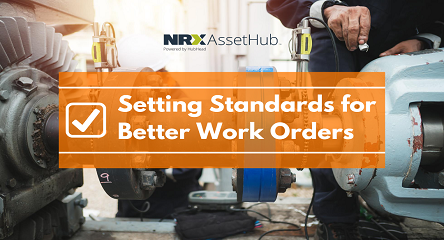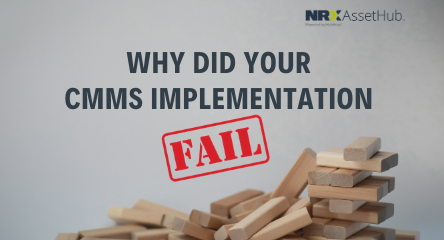Here are a couple of curious observations:
- End users and providers of ERPs (enterprise management systems) are often technologically very backward in this specialty of managing MRO supplies.
- There are but a handful of specialists (experts) in this field who have developed any sort of advanced technological solutions, yet they remain somewhat obscure.
Whilst there is considerable knowledge and expertise available, it does not seem to get far beyond those specialists.
Is There Complexity in the Management of MRO Materials?
Unfortunately, a reductionist and misguided view still prevails in industry, where everything boils down to manually assigning Min/Max to items in an inventory.
I could write dozens of pages explaining what is the real dimension and complexity of the discipline (risk analysis, economics, logistics, mathematics, statistics, reliability engineering, theory of constraints etc.). However, as there is no room for extended explanations, I will give this illustrative example:
Suppose an inventory of just 1,000 items (a thousand stock codes); even if we set a maximum stock level of 1 (allowing just 2 options between 0 and 1 for each item), there are 21,000 distinct inventory positions, i.e., an astronomical number of possibilities.
The question that then arises is: Among these possibilities, which one or ones would be the best? As it can be seen, a reasonable level of complexity exists and certainly cannot be approached without the support of advanced analytical tools that, despite being available in the marketplace for quite a long time, most industrial companies either still do not know or do not use.
What is the Real Impact of MRO Materials in the World Industry?
Many companies have too much of what they don’t need and not enough of what they do. Inventory levels tend to be higher than necessary, resulting in financial loss with working capital tied up to inventory.
There is an inexorable fact: every lack of material (stock-out) causes some sort of an operating expense (production loss, product downgrade or loss, cost with operating and maintenance maneuvers to keep the plant running, expedited freight, overtime, and lower labor productivity, among others).
Moreover, an ineffective spares management process can result in at least 20% – 35% of machine down time due to its impact on repair times. This is often due to the lack of necessary parts and materials to perform repairs correctly and quickly the first time. The side effect is lower availability and, consequently, lower production volume, lower revenue and lower profit. Compounding that, we can find maintainers who will “make due” with what’s available, corrupting asset configuration and potentially creating even more downtime when later incidents occur with the same machine.
Paradoxically, despite significant production losses caused by lack of spare parts, those losses are hardly accepted by management. Often we hear a claim: “Here in our company there is no production loss because any loss can always be recovered without impacting the production plan.”
Excluding spare capacity caused by lack of demand for the products, if there is always room to “recover production losses”, then one would conclude that the assets are being programmed to operate with float, and one of the reasons for this certainly is the assumed “unavoidable” delays caused by lack of materials. In other words, we assume there will be delays, build in slack to allow for it and then we can’t be behind! Prophesy becomes reality.
Excluding primary practices that still prevail in most industrial companies, the evolution of MRO Materials Management Technology can be summarized in three technological waves, as shown below.
First Wave: Conventional Technology
There are many grave technological limitations. Here are two that are particularly relevant and easy to understand.
First: Suppose there are two items with exactly the same characteristics and replenishment lead time, and each is equally important to the plant operation. One costs $100 and the other $2,000. If we are attempting to allocate a fixed budget to obtain the highest possible availability for the plant containing the two items, we should presumably buy relatively more of the inexpensive item and fewer of the expensive one. However, and oddly enough, as cost is solemnly ignored, both items would be warranted equal stock level and equal protection (service level or risk of shortage).
Second: Regardless of the demand pattern or volume (erratic, low, medium or high) for each one of the thousands items in inventory, the demand is assumed to be adherent to the normal distribution (Gauss). We know from the realm of Reliablity Engineering that the very failures giving rise to parts demand can be normal, negative exponential or hyper-exponential. Is the Gaussian assumption not, therefore, inherently risky?
All ERPs today fall into this technological stage. They remain untethered to the realities of reliability distributions!
Second Wave: Intermediate Technology
In this wave we add two improvements to the first wave. The first is that demand is assumed to be adherent to other distributions, especially so Poisson and Bernoulli, ignoring the fact that these two distributions are unable to adequately handle items with erratic, trend or seasonality demand patterns. The second is to allow automatic recalculation of the inventory control parameters. Despite these two point improvements, it stops with the limitations inherited from the first wave.
Many inventory optimization tools fall into this second technological stage and they remain un-integrated with the ERPs.
Third Wave: Advanced Technology
In this case, I refer to a technological breakthrough whose focus is on what really matters: the achievement of a trade-off between inventory investment and operational availability of the assets. For this, it makes use of cutting edge technology embodied by complex algorithms and heuristics unparalleled in the specialty.
The paradox is that, despite being used with remarkable success for almost two decades in the segments of: defense, aerospace, aviation, oil rigs, rail, and power generation; this technology is still little known and little used in the industry in general.
In order to illustrate its effectiveness, if your company experiences a mean global service level of say, 95%, then we have shown that same performance can be maintained with 20 to 35% less inventory investment. Add in the potential increase in production and productivity, and reduction in operating costs, among other benefits and it no small wonder that this capability is ignored by most! Yet in most cases, they simply don’t know what they don’t know.
Conclusion
There is an amazing opportunity in terms of increased productivity and competitiveness if we only embrace the second and third waves of MRO Technology and exploit them as they were designed to be exploited.
This article was written by David A de Castro, President of Brasman Engenharia, Brazil. He is a registered consulting engineer with an MSc degree in mechanical engineering. David has over 35 years of experience in maintenance and reliability engineering with large corporations and on-the-job training in Germany, Italy, Spain, Switzerland, the UK and USA. He has authored over than 20 technical papers on maintenance engineering and MRO materials. For the past 10 years, David has specialized in scientific inventory control of MRO materials and spare parts. The work has involved developing and implementing innovative best practices and analytical tools to process facilities all over Brazil. David is a lecturer of post-graduation at the University of Salvador, Unifacs, Salvador, Brazil.





